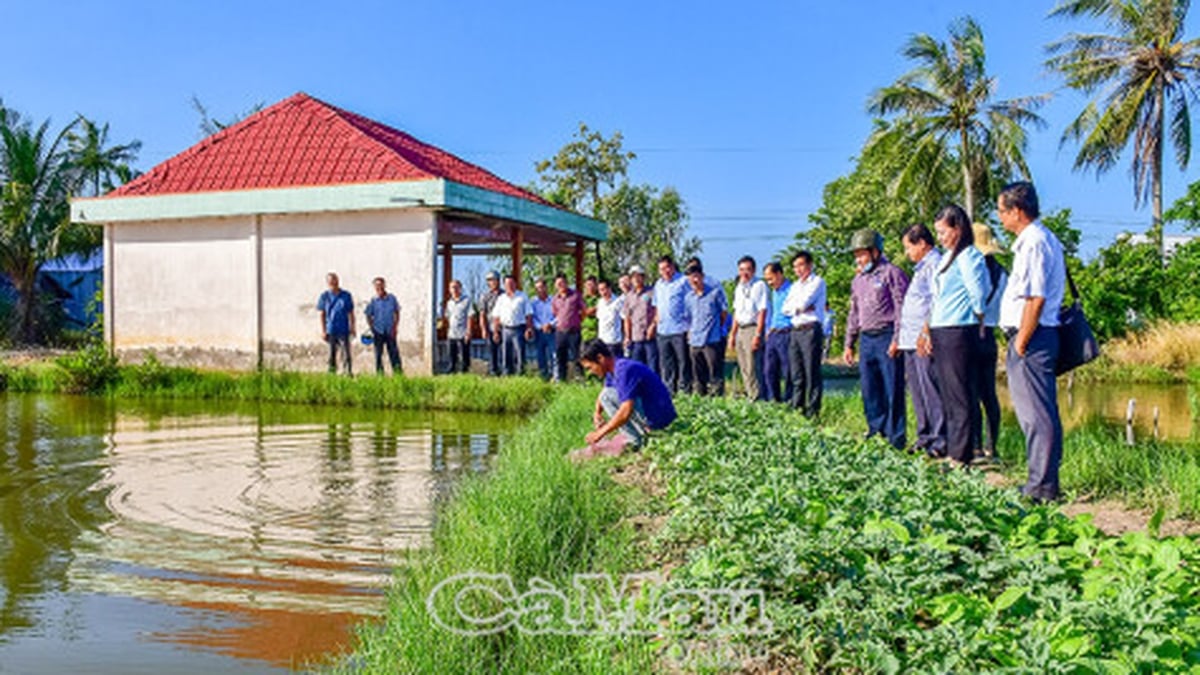About 10 days before being admitted to the hospital, Mr. HV (42 years old, with type 2 diabetes, high blood pressure, and a history of lumbar spine surgery infection) felt pain in his left knee and had difficulty moving. Despite being hospitalized, Mr. V's condition showed no signs of improvement.
A hospital in Ho Chi Minh City recorded that Mr. V's left knee was red and swollen, with severe pain, and the joint was almost immobile. Initially, doctors suspected that the patient had an abscess on the left knee due to arthritis. However, when performing further in-depth clinical tests, they unexpectedly discovered that the inflammation in the left knee was not only abnormally large but also spread to the thigh, with signs of joint bleeding. Blood tests showed that patient V had microcytic hypochromic anemia - a condition of severe anemia and thrombocytopenia due to many causes, including infection. In addition, imaging results also detected multiple abscesses in the lungs. Therefore, doctors quickly conducted a culture test - bacterial identification using an antibiotic susceptibility test on the patient's body fluid sample, resulting in the identification of the bacteria Burkholderia pseudomallei.
Dr. Vo Thi Huynh Nga commented: “This is a case of severe sepsis caused by Burkholderia pseudomallei bacteria that damages multiple organs from soft tissue, knee joints and spreads to the lungs causing lung abscess. The patient is at high risk of death if not treated promptly!”
According to Dr. Huynh Nga, the patient had previously been treated for a right groin abscess and a lumbar spine surgical site infection. However, when the above inflammatory conditions had subsided, the patient stopped taking the antibiotic regimen that was required to be followed. Combined with diabetes that weakens the immune system, along with favorable factors such as an unsanitary living environment and an infection in the left knee that was not properly cared for, the bacteria that causes Whitmore disease had the opportunity to attack.
Whitmore disease, also known as “flesh-eating bacteria” by many people, is a rare but extremely dangerous disease because this bacteria is resistant to many common antibiotics, requiring a long-term treatment regimen (usually 3-6 months) with specific drugs. In particular, Whitmore disease has a high risk of causing death in cases with underlying diseases that weaken the immune system such as HV patients.
After more than 1 month of treatment, the patient had positive changes. The inflammation in the left knee was gradually controlled, the pleural effusion was reduced, and Mr. V's health stabilized. From being bedridden, the patient was able to stand up and move gently, his motor function gradually recovered and he was discharged from the hospital afterwards.
Although he has passed the critical stage, with Mr. V's complicated medical history, Dr. Huynh Nga commented: "Whitmore's disease has a high chance of recurrence if not treated properly. Therefore, to completely cure the disease, the patient needs to continue to adhere to outpatient antibiotic treatment and have regular check-ups every month for at least the next 3 months or even 6 months."
Minh Trang
Source: https://baophapluat.vn/vi-khuano-an-thit-nguoi-tu-chan-tan-cong-phoi-nguoi-dan-ong-post546735.html



























![[Photo] National Assembly Chairman attends the seminar "Building and operating an international financial center and recommendations for Vietnam"](https://vphoto.vietnam.vn/thumb/1200x675/vietnam/resource/IMAGE/2025/7/28/76393436936e457db31ec84433289f72)









































































Comment (0)